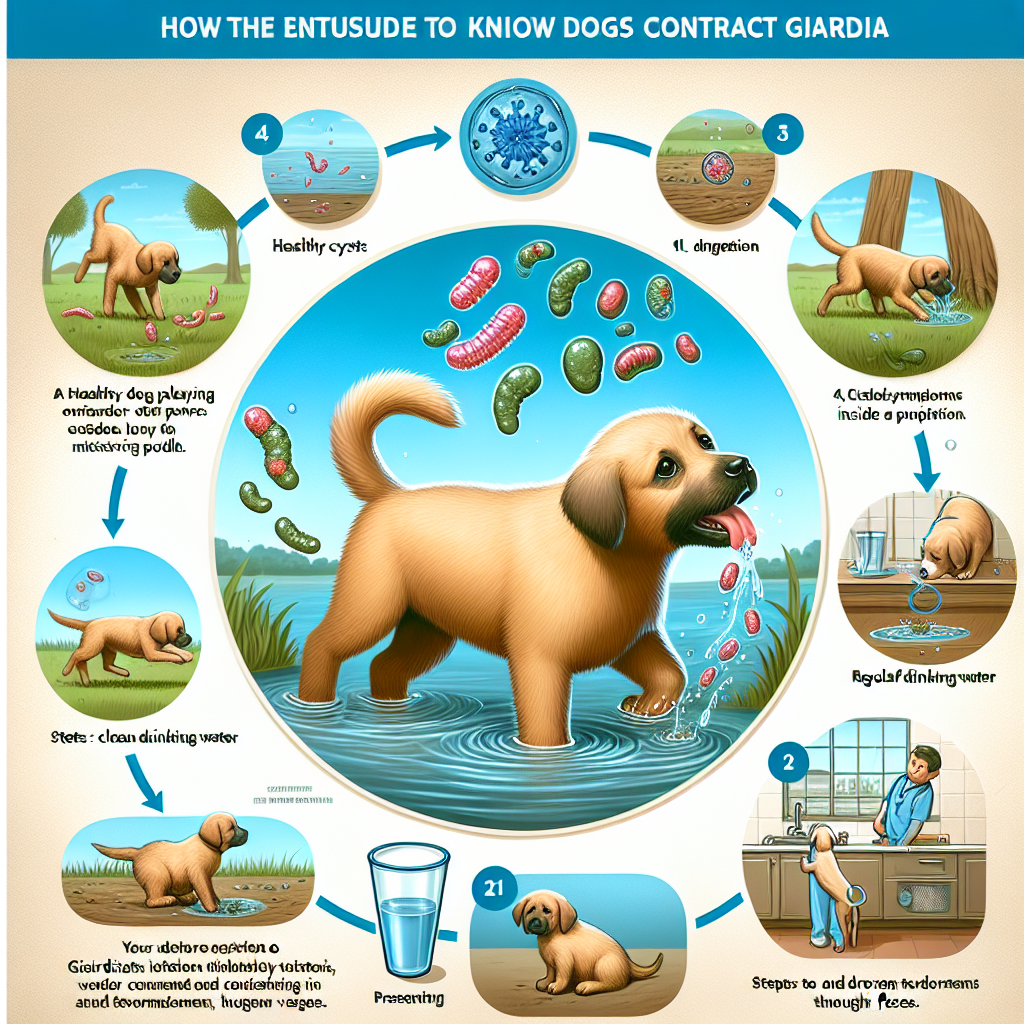===
Every dog owner knows the joy and companionship that comes with having a four-legged friend. However, one of the less delightful aspects of dog ownership is the potential for health concerns, particularly parasitic infections. Among these, Giardia stands out as a frequent troublemaker, causing gastrointestinal distress in our beloved pets. Understanding how dogs contract Giardia is crucial for prevention and treatment, ensuring your furry companion remains happy and healthy. This comprehensive guide delves into the life cycle of Giardia and explores the risk factors associated with its infection, offering insights that every dog owner should be aware of.
The Life Cycle of Giardia: What Every Dog Owner Should Know
Giardia is a microscopic parasite belonging to the genus Giardia. Its life cycle consists of two primary stages: the trophozoite and the cyst. The trophozoite stage is the active form that resides in the intestines of infected animals, where it attaches to the intestinal lining and feeds on nutrients. Here, it can multiply rapidly, leading to severe digestive issues. The cyst stage, on the other hand, is a resilient form that can survive outside the host for extended periods, making it a significant concern for dog owners.
Understanding the transition between these two stages is critical. When a dog becomes infected, trophozoites can be passed in the feces, where they transform into cysts. These cysts can contaminate water sources, soil, and surfaces, remaining viable for months or even years. Dogs may ingest these cysts while drinking contaminated water or exploring their environment, which can lead to infection. This cycle underscores the importance of good hygiene and monitoring your dog’s environment to reduce exposure risks.
Moreover, the life cycle of Giardia is not limited to dogs alone; it can also infect other animals and even humans. This zoonotic potential heightens the importance of understanding how Giardia spreads and how to protect both your pet and your family. By maintaining a clean environment, ensuring your pet has access to safe drinking water, and being vigilant about their fecal matter, you can significantly decrease the risk of Giardia infection.
Risk Factors for Giardia Infection in Dogs Explained
Several key factors can elevate the risk of Giardia infection in dogs, often interrelated and compounded by the environment. One of the foremost risk factors is exposure to contaminated water sources. Dogs that frequently visit beaches, lakes, or streams are at a higher risk, especially if they drink unfiltered water. Giardia cysts are resilient and can persist in water for long periods, making natural bodies of water potential hotbeds for infection.
Another critical risk factor is overcrowding and poor sanitation. Dog parks, kennels, and even grooming facilities can become breeding grounds for Giardia if proper hygiene practices are not observed. In these environments, dogs are more likely to come into contact with feces containing Giardia cysts. Regular cleaning and monitoring of communal areas can significantly lower the chances of outbreaks. As responsible dog owners, being aware of these risks and taking proactive measures can protect not just your pet, but the community as a whole.
Lastly, certain breeds and ages may exhibit a higher susceptibility to Giardia infection. Puppies, for instance, are notably vulnerable due to their immature immune systems. Older dogs or those with compromised immune systems may also face increased risks. Understanding your pet’s unique health status can aid in taking preventive measures. Regular veterinary check-ups and vaccinations can help bolster their immune defenses, reducing the likelihood of contracting this pesky parasite.
===
In conclusion, understanding how dogs contract Giardia and the life cycle of this parasite equips pet owners with essential knowledge to protect their furry companions. By being mindful of risk factors such as water sources, sanitation practices, and your dog’s health status, you can significantly minimize the chances of infection. Keeping your dog’s environment clean and ensuring they have access to safe drinking water are vital steps in this endeavor. Remember, a well-informed owner is the first line of defense against Giardia. Take action today by educating yourself and implementing preventive measures, ensuring your dog remains healthy and vibrant for years to come.
Measuring Your Dog’s Height: A Comprehensive GuideUnderstanding How Dogs Become Infested with FleasUnderstanding the Lifespan of Pug Dogs: What to ExpectRelevant LinkRelevant LinkRelevant Link
